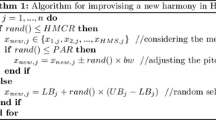Abstract
To ensure the accuracy of image segmentation, selecting appropriate image features is crucial. The existing image segmentation methods mainly utilize spectral features of images to achieve image segmentation, which have low segmentation accuracy and weak robustness, and are difficult to adapt to the needs of complex image segmentation. Therefore, this paper proposes a new robust fuzzy clustering image segmentation based on Wasserstein distance in the Riemannian manifold feature space. At first, the spectral features of pixels in the neighborhood window around the current pixel are constructed into a Gaussian normal distribution structure model, and the original image is mapped to the Riemannian manifold feature space to achieve Riemannian manifold feature modeling of image feature information. Secondly, the Wasserstein distance is used to measure the difference between two Gaussian Riemannian manifolds, and a robust fuzzy clustering method for image segmentation is proposed in Riemannian manifold feature space. Finally, the local convergence of the algorithm is proved using the Zangwill theorem and bordered Hessian matrix. The experimental results demonstrate that the proposed algorithm has good segmentation performance and strong noise resistance. Compared with existing segmentation algorithms based on spectral feature space and Riemannian manifold feature space, this proposed algorithm is more effective and robust in segmenting images with or without noise.















Similar content being viewed by others
Data availability
The dataset used and analyzed in this paper is publicly available at: https://www2.eecs.berkeley.edu/research/projects/cs/vision/grouping/resources.html#bsds500. https://captain-whu.github.io/AID. http://host.robots.ox.ac.uk/pascal/VOC/voc2012/index.html. https://paperswithcode.com/dataset/resisc45. http://weegee.vision.ucmerced.edu/datasets/landuse.html
References
Minaee, S., Boykov, Y., Porikli, F., Plaza, A., Kehtarnavaz, N., Terzopoulos, D.: Image segmentation using deep learning: a survey. IEEE Trans. Pattern Anal. Mach. Intell. 44(7), 3523–3542 (2022)
Wang, P.: Pattern recognition with fuzzy objective function algorithms (James C. Bezdek). SIAM Rev. 25(3), 442 (1983)
Ahmed, M.N., Yamany, S.M., Mohamed, N., Farag, A.A., Moriarty, T.: A modifed fuzzy c-means algorithm for bias field estimation and segmentation of MRI data. IEEE Trans. Med. Imaging 21(3), 193–199 (2002)
Szilagyi L., Benyo Z., Szilágyi S., Adam H.: MR brain image segmentation using an enhanced fuzzy c-means algorithm. In: Proceedings of the 25th Annual International Conference of the IEEE Engineering in Medicine and Biology Society. (2003)
Wang, Z.B., Ma, Y.K., Zhang, Y.N.: Review of pixel-level remote sensing image fusion based on deep learning. Inform. Fusion. 90, 36–58 (2023)
Li, Y., Xuan, Y., Zhao, Q.: Remote sensing image segmentation by combining manifold projection and persistent homology. Measurement 198, 111414 (2022)
Zhao, X.M., Li, Y., Wang, H.J.: Manifold based on neighbour mapping and its projection for remote sensing image segmentation. Remote Sens. 40(24), 9304–9320 (2019)
Zhao, X.M., Wang, H.J., Wu, J., Li, Y., Zhao, S.J.: Remote sensing image segmentation using geodesic-kernel functions and multi-feature spaces. Pattern Recogn. 104, 1070333 (2020)
Zhao, T.Y., Zhao, Q.H.: Remote sensing image segmentation algorithm of Riemannian manifold space based on fuzzy clustering. Radio Eng. 51(8), 738–741 (2021)
Zhao, X.M., Li, C., Wu, J., Li, X.L.: Riemannian manifold-based feature space and corresponding image clustering algorithms. IEEE Trans. Neural Netw. Learn. Syst. 5(2), 2680–2693 (2022)
Oh, J.H., Pouryahya, M., Iyer, A., Apte, A.P., Deasy, J.O.: A. Tannenbaum A novel kernel Wasserstein distance on Gaussian measures: An application of identifying dental artifacts in head and neck computed tomography. Comput. Bill. Med.. 120, 103731 (2022)
Chen, T.Z., Sun, W.: Deep convolutional embedded fuzzy clustering with Wasserstein Loss. Artif. Intell. Data Big Data Process. 124, 163–174 (2021)
Bai, Z., Liu, H., Wong, X.: Enhancement of the applicability of Markowitz’s portfolio optimization by utilizing random matrix theory. Math. Financ. 19(4), 639–667 (2009)
Kolouri, S., Park, S.R., Thorpe, M., Slepcev, D., Rohde, G.K.: Optimal mass transport: signal processing and machine-learning applications. IEEE Signal Process. Mag. 34(4), 43–59 (2017)
Mi, L., Zhang, W., Gu, X.F.: Variational Wasserstein clustering vision-ECCV 2018. Computer Vis. 11219, 336–352 (2018)
Hartigan, J.A., Wong, M.K.: Algorithm AS 136: A K-means clustering algorithm. J. Royal Stat. Soc. Ser. C (Appl. Stat.). 28(1), 100–108 (1979)
Ding, Z.J., Sun, J.G., Zhang, Y.: FCM image segmentation algorithm based on color space and kernel function. Comput. Commun. Eng. 31, 48–51 (2013)
Roy, S., Maji, P.: Medical image segmentation by partitioning spatially constrained fuzzy approximation spaces. IEEE Trans. Fuzzy Syst. 28(5), 965–977 (2020)
Li, K., Xu, J.D., Zhao, T.Y., Liu, Z.W.: A fuzzy spectral clustering algorithm for hyperspectral image classification. Instit. Eng. Technol. 15(12), 2810–28175 (2021)
Chen, L., Zhao, Y., Zhang, P.: Efficient kernel fuzzy clustering via random Fourier superpixel and graph prior for color image segmentation. Eng. Appl. Artif. Intell. 116, 105335 (2022)
Lei, T., Jia, X.H., Zhang, Y.N., Liu, S.G., Meng, H.Y., Asoke, K.N.: Superpixel-based fast fuzzy C-Means clustering for color image segmentation. Fuzzy Syst. 27(9), 1753–1766 (2019)
Wu, C.M., Li, M.: Generalized multiplicative fuzzy partition C-means clustering. Inf. Sci. 670, 120588 (2024)
Wu, C.M., Qi, X.: Reconstruction-Aware kernelized fuzzy clustering framework incorporating local information for image segmentation. Neural Process. Lett. 56, 123 (2024)
Author information
Authors and Affiliations
Contributions
Chengmao Wu: Conceptualization, Methodology, Visualization, Investigation. Jia Zheng: Data curation, Writing—original draft, Software, Validation, Writing—review & editing.
Corresponding author
Ethics declarations
Conflict of interest
The authors declare no competing interests.
Additional information
Publisher's Note
Springer Nature remains neutral with regard to jurisdictional claims in published maps and institutional affiliations.
Rights and permissions
Springer Nature or its licensor (e.g. a society or other partner) holds exclusive rights to this article under a publishing agreement with the author(s) or other rightsholder(s); author self-archiving of the accepted manuscript version of this article is solely governed by the terms of such publishing agreement and applicable law.
About this article
Cite this article
Wu, C., Zheng, J. Wasserstein distance-based fuzzy C-means clustering in Riemannian manifold feature space for image segmentation. SIViP 19, 123 (2025). https://doi.org/10.1007/s11760-024-03705-0
Received:
Revised:
Accepted:
Published:
DOI: https://doi.org/10.1007/s11760-024-03705-0




